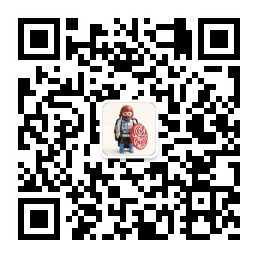[Android开发学iOS系列] 快速上手UIKit
阿里云国际版折扣https://www.yundadi.com |
| 阿里云国际,腾讯云国际,低至75折。AWS 93折 免费开户实名账号 代冲值 优惠多多 微信号:monov8 飞机:@monov6 |
快速上手iOS UIKit
UIKit是苹果官方的framework, 其中包含了各种UI组件, window和view, 事件处理, 交互, 动画, 资源管理等基础设施支持.
按照前面的介绍, 用UIKit写UI可以用storyboard(Interface Builder)和代码两种方式.
大体的思路都是添加组件后, 设置属性, 设置尺寸位置约束, 处理响应事件.
这里主要介绍用代码写的情形.
希望这篇文章, 可以帮你快速上手UIKit, 熟悉常用的组件, 完成一些简单的UI界面相关任务.
在代码中写UI的基本步骤
在代码中写UI的步骤大致是:
- 初始化.
- addSubview添加到当前view, 或hierarchy中的其他可达view.
- 设置约束.
比如:
class ViewController: UIViewController {
var myLabel: UILabel!
override func loadView() {
view = UIView()
view.backgroundColor = .white
// 创建实例
myLabel = UILabel()
myLabel.translatesAutoresizingMaskIntoConstraints = false
myLabel.text = "Hello"
// 添加到view中
view.addSubview(myLabel)
// 设置约束
NSLayoutConstraint.activate([
myLabel.topAnchor.constraint(equalTo: view.layoutMarginsGuide.topAnchor),
myLabel.trailingAnchor.constraint(equalTo: view.layoutMarginsGuide.trailingAnchor),
])
}
}
这里有几点说明:
var** myLabel: UILabel!组件字段这样声明有lateinit的作用, 如果不带!会报错, 说controller没有init方法.- 如果在代码中设置UI组件的constraints, 那么这个属性经常要设置为false:
translatesAutoresizingMaskIntoConstraints = **false**. 如果组件的位置是通过frame来设置的, 则不用设置这个属性. - 约束有多种写法, 这里只是其中一种, 用anchor的方式.
常用组件
文字: UILabel
设置文字等属性:
myLabel = UILabel()
myLabel.translatesAutoresizingMaskIntoConstraints = false
myLabel.font = UIFont.systemFont(ofSize: 24)
myLabel.text = "Hello"
myLabel.numberOfLines = 0
myLabel.textAlignment = .right
给UILabel设置点击事件:
myLabel.isUserInteractionEnabled = true
let tapGesture = UITapGestureRecognizer(target: self, action: #selector(userDidTapLabel(tapGestureRecognizer:)))
myLabel.addGestureRecognizer(tapGesture)
点击事件处理方法:
@objc func userDidTapLabel(tapGestureRecognizer _: UITapGestureRecognizer) {
print("label clicked!")
}
这里有#selector, 对应的userDidTapLabel方法要加上@objc. 便于OC的代码调用能找到swift的方法.
给UILabel设置点击事件和UIButton不同, 这点我们后面说继承关系的时候解释一下.
按钮: UIButton
设置文字:
submitButton = UIButton(type: .system)
submitButton.translatesAutoresizingMaskIntoConstraints = false
submitButton.titleLabel?.font = UIFont.systemFont(ofSize: 36)
submitButton.setTitle("SUBMIT", for: .normal)
submitButton.setTitleColor(.black, for: .normal)
设置点击事件:
submitButton.addTarget(self, action: #selector(submitTapped), for: .touchUpInside)
@objc func submitTapped(_ sender: UIButton) {
}
这里使用@objc的理由同上.
基本上我们在iOS代码中用到#的时候, 对应的方法都要加上@objc.
输入框: UITextField
myTextField = UITextField()
myTextField.translatesAutoresizingMaskIntoConstraints = false
myTextField.placeholder = "What's your name?"
myTextField.textAlignment = .center
myTextField.font = UIFont.systemFont(ofSize: 44)
想要禁用输入框可以这样:
myTextField.isUserInteractionEnabled = false
弹框
在app里简单的交互我们经常需要弹出一个对话框:
let alert = UIAlertController(title: "title", message: "message", preferredStyle: .alert)
alert.addAction(UIAlertAction(title: "Ok", style: .default))
alert.addAction(UIAlertAction(title: "Cancel", style: .cancel))
present(alert, animated: true)
其中preferredStyle有.alert和.actionSheet两种.
.alert是中心的对话框, 一般用于信息提示或者确认操作; .actionSheet是底部的bottom sheet, 一般用来在几个选项中做选择.
其他
- view中比较常用的属性
isHidden, 控制view是否需要隐藏. - 所有的UIView都有一个
layer属性.
设置border的宽度和颜色就在layer上设置.
CALayer在UIView之下. 所以不知道UIColor, 只知道CGColor.
本文仅列出几个常用组件, 更多的请看官方示例.
继承关系
NSObject是所有Cocoa Touch class的基类. 所有UIKit中的类都是它的子类.
这里有一个类关系的图:

我们这里不展开讲述所有了, 只解答一下前面提出的关于UILabel点击事件的问题.

这里可以看到UILabel和UIButton虽然都继承了UIView, 但是UIButton的继承层次更深一些, 它还继承了了UIControl.
可以看到和UIButton平级的还有好几个子类.
Controls使用的是target-action机制, 所有的action都通过方法: addTarget(_:action:for:) 添加.
约束Constraints
当在代码中设置约束时, 有三种选择:
- 使用layout anchors.
- 使用
NSLayoutConstraint类. - 使用Visual Format Language.
上面我们提到过的就是其中Layout Anchors的写法:
初级单个写法:
buttonsView.topAnchor.constraint(equalTo: view.centerYAnchor).isActive = true
buttonsView.bottomAnchor.constraint(equalTo: view.bottomAnchor).isActive = true
buttonsView.leadingAnchor.constraint(equalTo: view.leadingAnchor).isActive = true
buttonsView.trailingAnchor.constraint(equalTo: view.trailingAnchor).isActive = true
放进数组里批量激活写法:
NSLayoutConstraint.activate([
buttonsView.topAnchor.constraint(equalTo: view.centerYAnchor),
buttonsView.bottomAnchor.constraint(equalTo: view.bottomAnchor),
buttonsView.leadingAnchor.constraint(equalTo: view.leadingAnchor),
buttonsView.trailingAnchor.constraint(equalTo: view.trailingAnchor),
])
感觉是对新手比较直观的一种写法.
其他写法文末有参考文档.
PS: 项目中更流行用 SnapKit.
区域限制
safeAreaLayoutGuide: 去掉圆角和刘海.layoutMarginsGuide: safe area的内部再加上一些额外的margin.
Bonus
- 友情提示: 在xcode里就可以看官方文档, 快捷键是
Cmd + Shift + 0.
References
阿里云国际版折扣https://www.yundadi.com |
| 阿里云国际,腾讯云国际,低至75折。AWS 93折 免费开户实名账号 代冲值 优惠多多 微信号:monov8 飞机:@monov6 |


